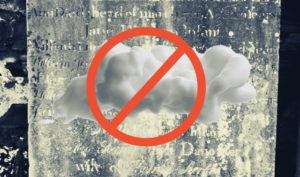Cautionary Advice: Avoid This Product When Cleaning Old Tombstones

Family Tree Magazine regularly features articles on cemeteries, which usually provokes someone to send us an email praising shaving cream as an effective tombstone cleaner. We’ve come to expect such emails when sharing an article on cemeteries in Family Tree.
However, preservation gurus believe that acids and chemicals found in shaving cream hasten gravestones’ decay – meaning these well-intentioned people’s efforts could actually do more damage than good.
How to Take Better Tombstone Photos
As much information exists regarding the safety of shaving cream, conflicting advice may come as an unpleasant surprise. While one article or website might caution about its use on gravestones, another one might advocate its usage freely. Thus I may be advocating an unpopular viewpoint by repeating what this magazine stands for – don’t use shaving cream on gravestones.
The cardinal rule of preservation is doing nothing harmful or irreversible, yet according to the Association of Gravestone Studies, shaving-cream chemicals never fully wash away. As explained by Saving Graves’ article “Shaving Cream: Right or Wrong?,” those soaps, mineral oils, and fatty alcohols feed microorganisms such as fungi and mosses; eventually this growth creates expansive forces which cause microscopic particles of stone to be flaked off progressively over time; in addition, their pores collect moisture during wet freezing weather, which causes microfractures.”
Shaving cream supporters contend that damage won’t occur for years — and simply being outdoors puts tombstones at risk. We understand genealogists’ motivations for using shaving cream; but why treat tombstones any differently than an old deed book to “restore” its original appearance? Instead, use one of the safer solutions discussed on Saving Graves to prevent further deterioration.
Tombstones are historical artifacts. No matter if these markers honor your relatives or not, future generations deserve every right to experience them just as you do now. Don’t rob future family historians of that opportunity!
From the June 2006 edition of Family Tree Magazine.



